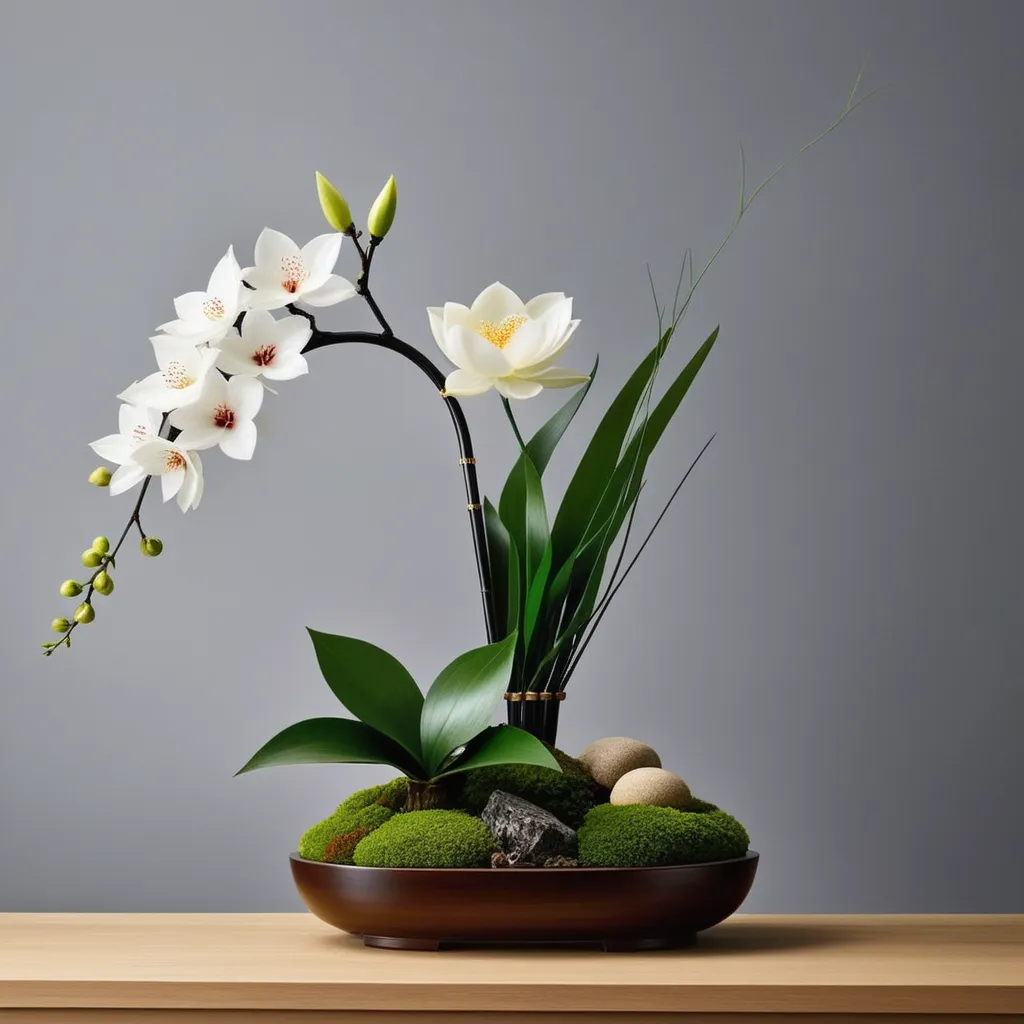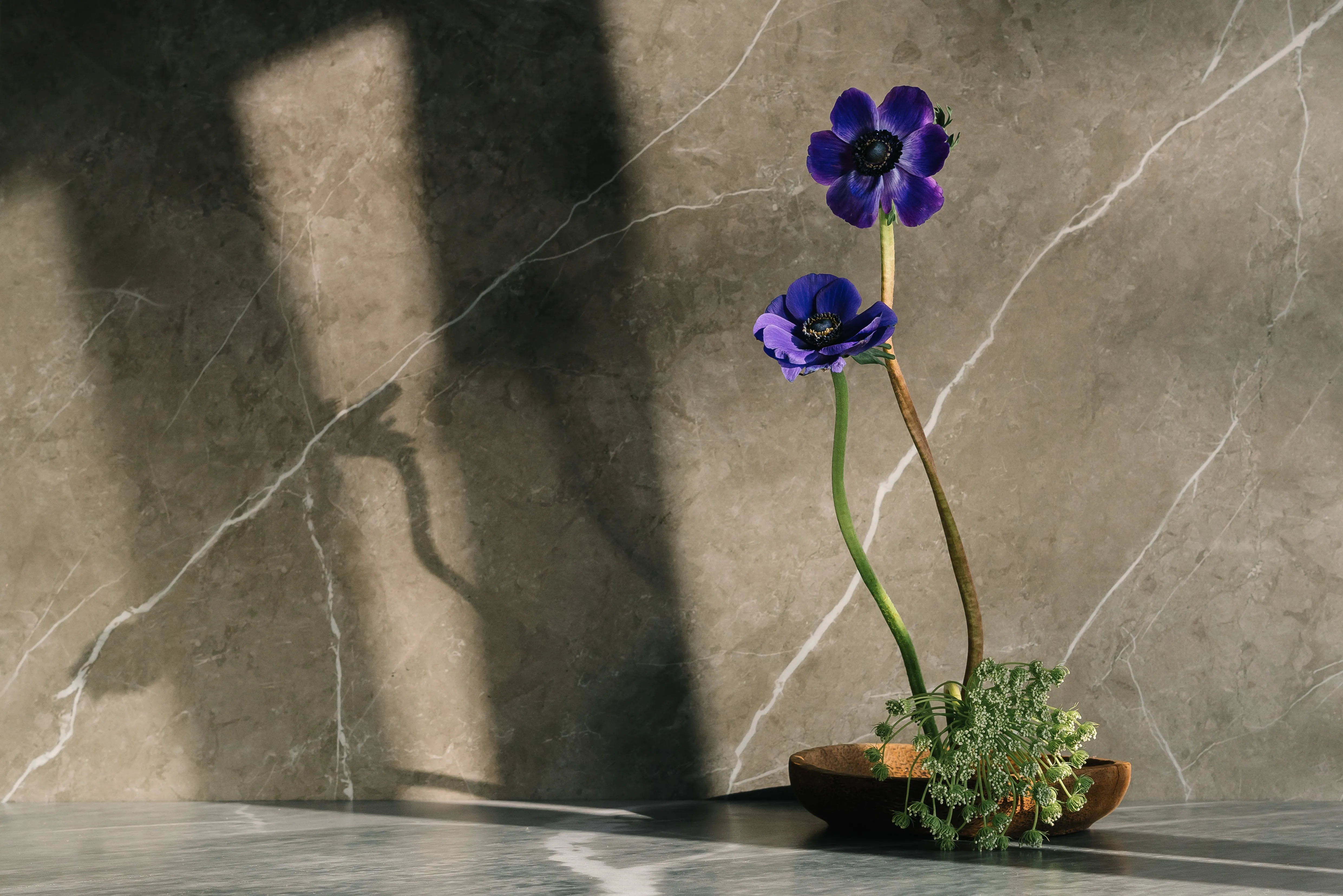Embracing Tranquility: The Art of Ikebana in Japanese Flower Arranging
In the hustle of modern life, there's a timeless practice that invites serenity into our homes—the art of Ikebana. Join me on a journey through the delicate world of Japanese flower arranging, where each bloom tells a story, and every arrangement is a work of living art.

Unveiling the Essence of Ikebana
A Personal Prelude to Petal Poetry
My introduction to Ikebana was an unexpected gift from a friend who, upon returning from Japan, brought with her not just souvenirs but a newfound appreciation for the beauty of simplicity. Little did I know that a small ikebana arrangement would become a daily source of joy and reflection.
Beyond Decoration: Capturing the Spirit of Nature
Unlike conventional flower arrangements, Ikebana transcends the mere aesthetic. It is a practice deeply rooted in capturing the essence of nature. Each stem, leaf, and petal is a brushstroke in a larger canvas, reflecting the changing seasons and the ephemerality of life.
The Three Pillars of Ikebana: Heaven, Earth, and Man
Harmony with Nature: Heaven (Ten)
Ikebana's first pillar, Ten, represents heaven. It encourages us to embrace the natural shapes and lines of plants, mimicking the organic beauty found in the world around us. The goal is not just arranging flowers but harmonizing with the innate grace of nature.
Earthly Balance: Earth (Chi)
Chi, the second pillar, symbolizes earth. It guides the arrangement to maintain a delicate balance, considering the weight and proportion of each element. Ikebana teaches us to find equilibrium in our surroundings, mirroring the interconnectedness of all living things.
Human Connection: Man (Jin)
The final pillar, Jin, signifies man. In Ikebana, the arranger's spirit is infused into the arrangement, creating a personal connection between the artist and the art. It's a reminder that beauty is not just in the flowers but in the intention and energy we invest in the process.
Ikebana in Practice: A Symphony of Seasons
Spring's Dance: Simplicity in Bloom
During spring, Ikebana celebrates the awakening of nature. Arrangements embody the freshness of new beginnings, often featuring cherry blossoms or plum blossoms. Delicate and uncluttered, these arrangements capture the essence of spring's fleeting beauty.
Summer's Abundance: Celebrating Fullness
As summer unfolds, Ikebana arrangements embrace abundance. Vibrant colors and diverse textures come together, mirroring the richness of nature during this season. The arrangements radiate energy and reflect the full bloom of life.
Autumn's Tranquility: Embracing Change
In autumn, Ikebana takes on a more subdued tone, reflecting the changing hues of the leaves. The arrangements invite contemplation and mirror the tranquility that comes with accepting the inevitability of change.
Winter's Simplicity: Finding Beauty in Restraint
Winter arrangements in Ikebana embody simplicity, often featuring evergreen branches or minimalist compositions. It's a season of quiet reflection, where the beauty lies in the understated elegance of nature at rest.
Embracing Ikebana: A Personal Retreat
My Ikebana Journey: Finding Calm in Chaos
As I immersed myself in the practice of Ikebana, I discovered a personal retreat—a mindful pause in the midst of chaos. Creating an Ikebana arrangement became a form of meditation, grounding me in the present moment and fostering a deep appreciation for the transient beauty of life.

Conclusion: Blooming Beyond Boundaries
Ikebana's Universal Appeal
Ikebana's allure extends far beyond its Japanese origins. It's a universal language that speaks to the human spirit's need for connection with nature and the pursuit of harmony. Whether you're a seasoned practitioner or a curious beginner, the art of Ikebana invites you to slow down, observe, and create beauty in the simple act of arranging flowers.<







